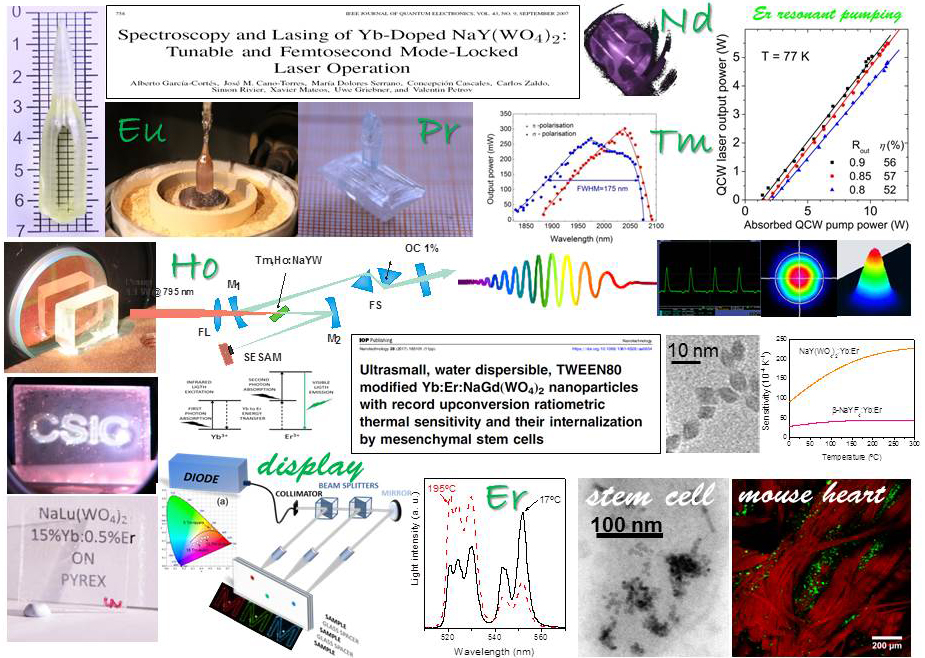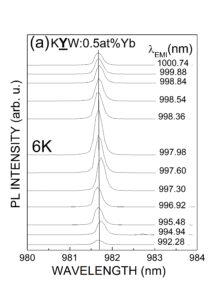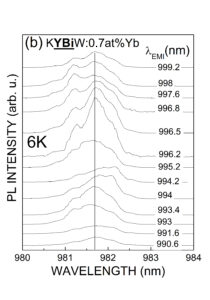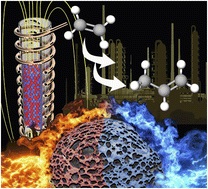CDs derived from eco-friendly precursors (xylose and biomass-derived hemicellulose) are combined with GdVO₄:Tb,Eu nanoparticles via two distinct approaches: (i) hydrothermal deposition onto the lanthanide-doped particles and (ii) physical mixing of prefabricated components. Notably, the spectroscopic properties of the resulting composites depend on the fabrication route, see our work published in Adv. Mater. Interfaces 2025, e00410, doi: 10.1002/admi.202500410. While method (i) enables competitive energy transfers from the vanadate charge transfer band (CTB) to Eu³⁺ and CDs, method (ii), which involves lower concentrations of the emissive components, promotes a cooperative mechanism wherein CDs sensitize the CTB, enhancing the Eu³⁺ red emission. In both scenarios, Tb3+ is believed to serve as an intermediary, aiding the repopulation of the Eu3+ 5Dj energy levels. The dual-emissive nature of the composites results in violet-magenta chromaticity, reflecting intermediate behavior between the blue CDs and red-emitting Ln-NPs, and supporting their use in tunable optical applications. The described mechanisms also influence the composites’ performance as ratiometric nanothermometers. Upon evaluating their thermal response from 298 K to 358 K, distinct behaviors emerge, with relative thermal sensitivities ranging from 0.84 % K⁻¹ (298 K) to 5.6 % K⁻¹ (358 K)—the latter being among the highest reported for similar material






 Modelocked femtosecond lasers require of luminescent ions with large emission bandwidth and tunability. This requirement is difficult to fulfill with lanthanides due to the inner nature of the 4f orbital. The concept of «disordered single crystals» which is based on multiple (isovalent or heterovalent) cationic substitutions on the same lattice site has gained attention to solve the problem but results are still limited. In our recent publication in Journal of Alloys and Compounds 961 (2023) 171092 (doi 10.1016/j.jallcom.2023.171092) we show that the random orientation of the Bi3+ non-bonded 6s2 lone pair induces a large band broadening of the Yb3+ emission in monoclinic KY1-x-yBixYby(WO4)2 single crystals. The growth of these crystals and their laser capabilities are demonstrated within the activity of our THINLAS project.
Modelocked femtosecond lasers require of luminescent ions with large emission bandwidth and tunability. This requirement is difficult to fulfill with lanthanides due to the inner nature of the 4f orbital. The concept of «disordered single crystals» which is based on multiple (isovalent or heterovalent) cationic substitutions on the same lattice site has gained attention to solve the problem but results are still limited. In our recent publication in Journal of Alloys and Compounds 961 (2023) 171092 (doi 10.1016/j.jallcom.2023.171092) we show that the random orientation of the Bi3+ non-bonded 6s2 lone pair induces a large band broadening of the Yb3+ emission in monoclinic KY1-x-yBixYby(WO4)2 single crystals. The growth of these crystals and their laser capabilities are demonstrated within the activity of our THINLAS project.




 Our recent publication in Journal of Materials Chemistry A 2023, 11, 19854 (doi 10.1039/d3ta03654e) in collaboration with the Institute of Chemical Technology (UPV-CSIC) in Valencia (among others) adresses the problem found in Tandem Catalysis of having»spatially proximate but thermally distant» catalysts contained in a single reactor. An elegant solution arose through the specific heating of the hot catalyst by magnetic susception. A thermal gradient of 50 ºC between the hot and cold catalysts was infered by luminescence lifetime thermometry by using Eu3+-doped and Cr3+-doped nanoprobes. A probe of concept was demostrated by direct production of propene from ethene, via sequential olefin dimerization and metathesis reactions.
Our recent publication in Journal of Materials Chemistry A 2023, 11, 19854 (doi 10.1039/d3ta03654e) in collaboration with the Institute of Chemical Technology (UPV-CSIC) in Valencia (among others) adresses the problem found in Tandem Catalysis of having»spatially proximate but thermally distant» catalysts contained in a single reactor. An elegant solution arose through the specific heating of the hot catalyst by magnetic susception. A thermal gradient of 50 ºC between the hot and cold catalysts was infered by luminescence lifetime thermometry by using Eu3+-doped and Cr3+-doped nanoprobes. A probe of concept was demostrated by direct production of propene from ethene, via sequential olefin dimerization and metathesis reactions.